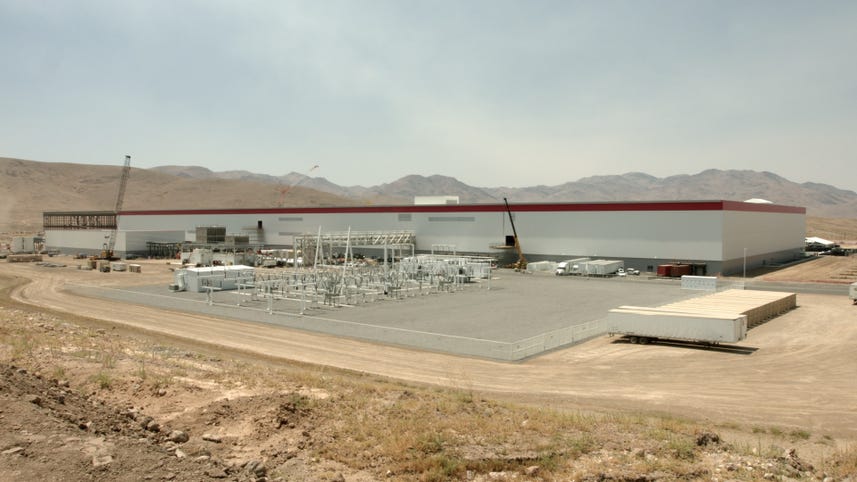
[MUSIC]
Welcome to the giga factory.
We're about a half an hour outside of Reno, Nevada at the joint effort between Panasonic and Tesla to create one of the World's most advanced factories.
This is where they'll produce all the battery packs for the model 3 and ultimately all of Tesla's other cars too.
It's already over 800,000 square feet Its gonna be more than five times that big when they finish it.
They're still building, but we're gonna take you for a tour in just a sec.
You have to get up on a hill to appreciate just how large the gigafactory is already.
But this is less than 15% of the final size, when it will basically cover all the flat space that you can see here.
The team will push out walls and dig out the hillside to make room for the ridiculously huge operation, which will ultimately produce more lithium ion batteries In the entire world did in 2013.
[INAUDIBLE] to the idea.
[LAUGH] Because [INAUDIBLE] the production capacity of this here factory would exceed total global production capacity of the industry.
Not the Panasonic, not the Japanese companies.
All Japanese, Korean, Chinese company combined.
So I thought it's crazy idea, but I was crazy and I was wrong.
After seeing extraordinary success Already announcing model 3.
The factory is already turning out a few batteries, units to be used in Tesla's power wall residential systems.
However the team hopes to be churning out the first model 3 battery packs by early next year.
So probably kind of in the March, April timeframe next year.
Obviously we're going to start using packs for Early production vehicles that that needs to then go to validation testing and then be ready for around basically July, August next year.
And by the end of 2018 they hope to be approaching full production.
[MUSIC]
And what does full production look like?
Well they're hoping for 500,000 battery packs coming out of here annually.
But due to some unexpected efficiencies Elon Musk thinks they might be able to do three times that.
One of the things that we discovered as we got more and more into the bigger factory design in terms of optimizing what it could do, we found that we could probably achieve about three times
The output that was originally planned.
So originally expected about 35 gigawatt hours at the cell level, and about 50 at the module impact level.
We now think we can probably do about 150 in the same volumetric space as the original design.
[MUSIC]
And that's crucial.
The battery packs produced here are the most important component for the Model Three.
Without these packs, the nearly four hundred thousand people who pre ordered a car are going to be pretty upset.
But it's not just about the volume.
By turning out packs here, Musk believes they can significantly reduce the cost of the car's batteries.
At this point I think we're optimistic that it's greater than 30%.
We don't want to bank that until it happens, but I would say at this point 30% is a conservative number.
I think by 2020 it will definitely be more than 30%.
It's that lower cost that will ensure Tesla makes a healthy profit on every Model 3 sold.
Overarching goal of Tesla is to accelerate the advent of sustainable energy, so we're going to take the set of actions that we think are most likely to achieve that goal.
That's about it form here at the Gigafactory.
We still have got a long way to go but Tesla thinks they'll be producing battery packs for the Model 3 by the middle of next Next year, and, ultimately, they wanna produce 500,000 battery packs a year.
They think they can get all the way to 1.5 million battery packs out of here every single year.
It's a good thing they've got plenty of room to grow.
[BLANK_AUDIO]